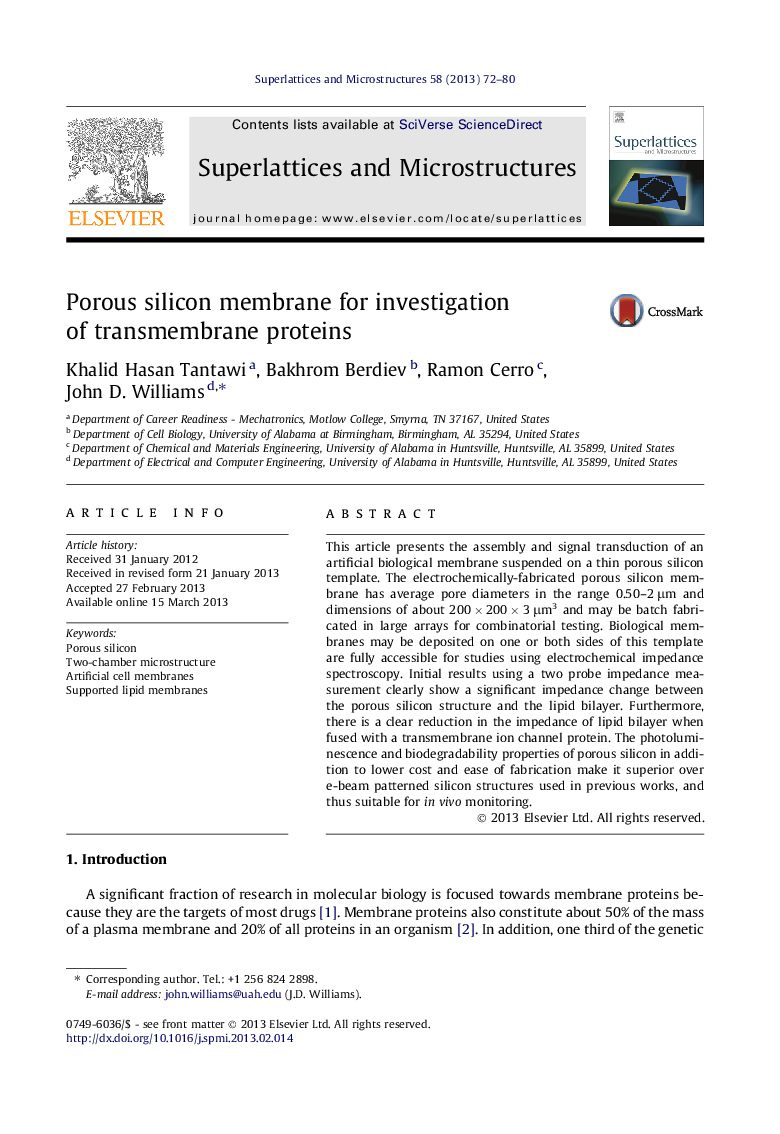| Article ID | Journal | Published Year | Pages | File Type |
|---|---|---|---|---|
| 1553703 | Superlattices and Microstructures | 2013 | 9 Pages |
•A structure of a supported porous silicon membrane is fabricated.•The membrane separates two fully-accessible chambers.•The porous silicon membrane has the dimensions of about 200 × 200 × 3 μm3.•It allows for performing functional and structural studies on transmembrane proteins.
This article presents the assembly and signal transduction of an artificial biological membrane suspended on a thin porous silicon template. The electrochemically-fabricated porous silicon membrane has average pore diameters in the range 0.50–2 μm and dimensions of about 200 × 200 × 3 μm3 and may be batch fabricated in large arrays for combinatorial testing. Biological membranes may be deposited on one or both sides of this template are fully accessible for studies using electrochemical impedance spectroscopy. Initial results using a two probe impedance measurement clearly show a significant impedance change between the porous silicon structure and the lipid bilayer. Furthermore, there is a clear reduction in the impedance of lipid bilayer when fused with a transmembrane ion channel protein. The photoluminescence and biodegradability properties of porous silicon in addition to lower cost and ease of fabrication make it superior over e-beam patterned silicon structures used in previous works, and thus suitable for in vivo monitoring.
Graphical abstractA porous silicon membrane that is supported from the sides is fabricated. With dimensions of about 200 × 200 × 3 μm3, this device allows for performing functional and structural studies on transmembrane proteins in an environment as close as possible to an in vivo one as illustrated in the cross sectional view in the figure.Figure optionsDownload full-size imageDownload as PowerPoint slide
